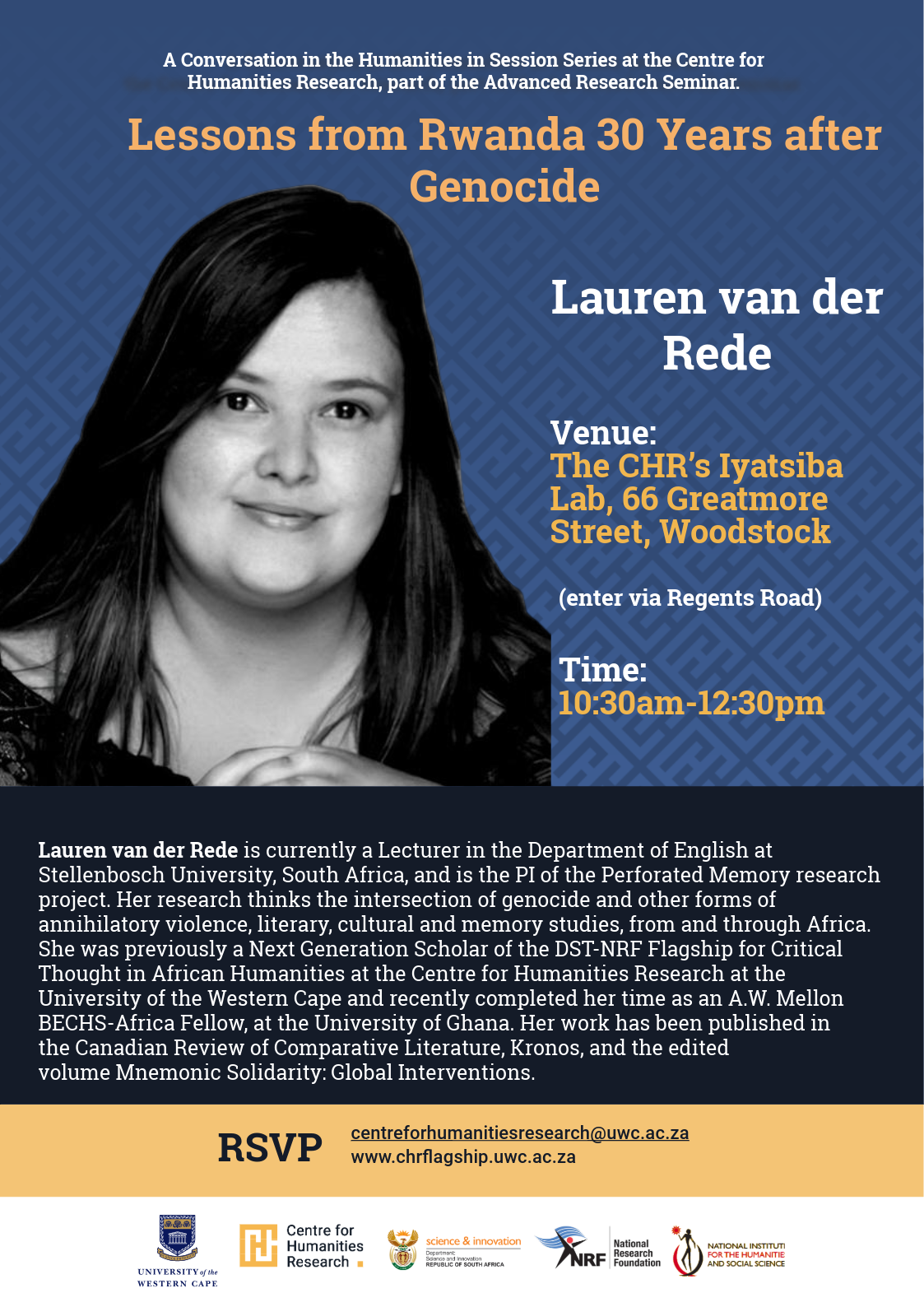Date:
Thursday 18 September
Time:
10:30am – 12:30pm
Venue:
The CHR’s Iyatsiba Lab,
66 Greatmore Street, Woodstock
(enter via Regents St)
Lauren van der Rede is currently a Lecturer in the Department of English at Stellenbosch University, South Africa, and is the PI of the Perforated Memory research project.
Her research thinks the intersection of genocide and other forms of annihilatory violence, literary, cultural and memory studies, from and through Africa. She was previously a Next Generation Scholar of the DST-NRF Flagship for Critical Thought in African Humanities at the Centre for Humanities Research at the University of the Western Cape and recently completed her time as an A.W. Mellon BECHS-Africa Fellow, at the University of Ghana. Her work has been published in the Canadian Review of Comparative Literature, Kronos, and the edited volume Mnemonic Solidarity: Global Interventions.
About the talk
At once known for its beauty as the land of a thousand hills, and as a cite of a genocide which unfolded approximately 30 years ago. This tension is held in an uneasy entanglement of ruin and repair embodied by various national memorials to the genocide, such as the Murambi Genocide Memorial, the Ntarama Genocide Memorial and the Nyamata Genocide Memorial. These former churches and schools, in a gesture to stage a living with the genocide as historical trauma that textures still the social, when thought together, offer an itinerarary of what I am referring to as mnemossiduous practice. This paper takes as a focalizing example the Nyanza Genocide Memorial, which juxtaposes the ruin of the past with the work of repair in the present, and indeed the future. It asks what might be at stake in reading Nyanza Genocide memorial as a text, constituted by encounter, for the question of repair. In a gesture toward attending to this, the reflections I offer are an attempt to abide by the literary as a mode of reading, Nyanza Genocide Memorial as a mnemonic marker of trauma that takes seriously assiduousness, and the lessons that these memorials offer in relation to the question of genocide.


